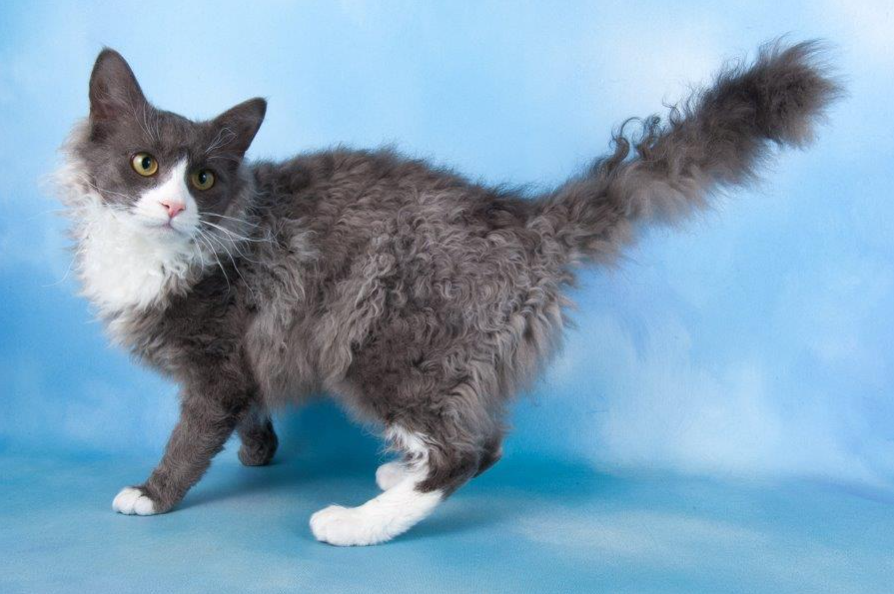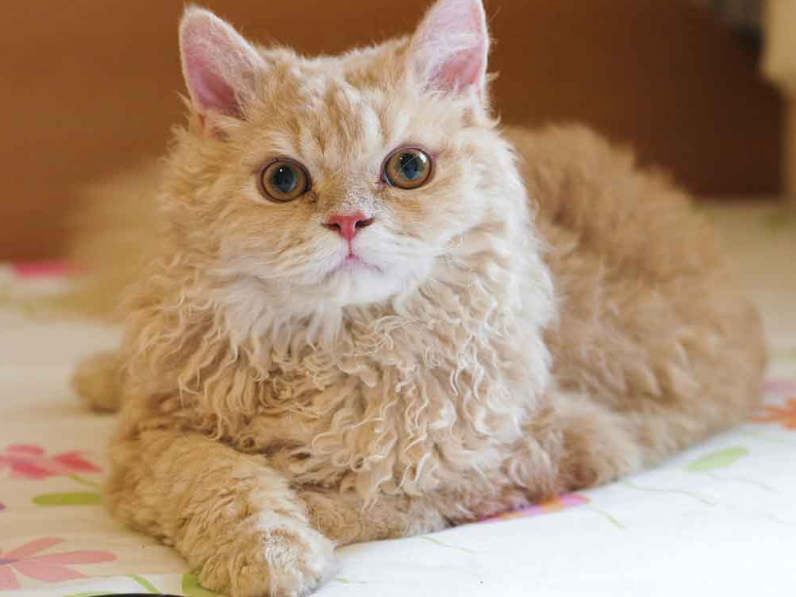Curls and Whirls: The Enchanting World of LaPerm Cats
LaPerm LaPerm is a domestic cat breed that is known for its unique curly coat. It’s characterized by bouncy, loose curls that cover the entire body, including its tail. The curls result of a genetic mutation that affects hair follicles. Despite its distinctive look, LaPerms are not a particular heavy or large breed. They come in a range of patterns and colors.
The most important characteristics in the LaPerm breed are:
Curly Coat: The most notable feature in this LaPerm can be seen in its curly coat. The curls may differ in length and tightness. They provide the cat with a distinctive and attractive appearance.
Friendly and Social LaPerms are usually described as friendly, affectionate as well as social cat. They are known to love being with their owners and are known for their solid bonds with their owners.
Moderate build: The LaPerms are built moderately, with a well-muscled body. They’re not terribly large or heavy, however they’re agile and active.
Ears and whiskers The breed usually has large ears as well as long, well-furnished whiskers which give it a lively and adorable appearance.
Different Colors LaPerms are available in various coat patterns and colors, including plain colors and tabby designs or pointed pattern.
Low maintenance: Despite their curly coats, the LaPerms are generally low maintenance when it comes to grooming. Curly fur does not mat easily, and a regular brushing will usually suffice to keep it in good shape.
LaPerm Cat Health And Feeding
Health:
Regular Visits to the Veterinarian: Schedule regular veterinary checks to check your LaPerm’s overall health, spot any issues that could be present early and assure they’re current on vaccinations.
Pest Control Make sure you take the appropriate measures to prevent ticks, fleas or internal parasites. Your veterinarian will recommend appropriate products according to your cat’s unique requirements.
Spaying or neutering: Consider spaying or neutering your LaPerms unless you intend breeding them. This can benefit to prevent certain health problems and unwanted behavior.
Dental Treatment: The health of your teeth is essential. Clean your cat’s teeth frequently, favor dental treats or toys, and look into dental exams with your vet.
Good Nutrition Give a nutritious, balanced and nutritiously complete cat food. The dietary requirements of your cat can differ based on a variety of the cat’s the age of the cat, their activity level and general health.

Feeding:
High-Quality Cat Food Select a cat food of high quality that will meet the nutritional requirements that your pet needs. Choose a food that contains genuine meat for the main ingredient, and stay clear of foods that contain overly fillers and artificial ingredients.
Life Stages: Different life stages (kitten, adult and senior) require different nutrition needs. Choose a cat food that is suitable to your cat’s age.
Food Control Weight gain is a common problem in cats. You should measure your cat’s portions of food to avoid overfeeding, and also monitor their weight on a regular basis.
Hydration Make sure your pet is able to drink water throughout the day. Certain cats like water that flows, and an animal water fountain might make them thirsty.
Special Diets In the event that your dog has special health issues or dietary needs you should consult your vet for advice on whether a particular diet is needed.
Avoid foods that contain toxic ingredients: Certain human foods like garlic, onions chocolate, alcohol, and chocolate can be harmful to cats. Keep these items away from their reach.
LaPerm Cat Care and Grooming
Care:
Regular Health Checks for Veterinarians: Schedule regular veterinary visits to assess your dog’s general health, discuss any issues that arise, and assure that vaccinations are current.
indoor environment: LaPerms are able to adapt easily the indoor environment. Create a secure and enriching indoor space to shield them from dangers such as predators, traffic, as well as illnesses.
Gaming and Mental stimulation LaPerms are well-known for their sociable and friendly nature. Get them involved in a game to offer stimulation for the mind and avoid boredom.
Scratching posts: Offer scratching pads or posts to soothe their natural desire to scratch, and benefit maintain the health of their claws. Regular nail trimming could be required.
Spaying and neutering You should consider neutering or spaying your LaPerms unless you are planning to breed the breed. This will not only help reduce the number of pets in your home, but also helps prevent certain health issues and behavior.

Grooming:
Brushing The majority of LaPerms have a coat that is low maintenance, however regular brushing prevents matting and also removes loose hair. Make use of a soft brush or comb be aware of the areas that are curly.
Bathing The majority of LaPerms don’t need frequent baths. However, if you choose to take your pet to bathe, you should use the cat-specific shampoo and warrant that the drying process is thorough to avoid skin problems.
Clean your ears: Check the ears frequently for signs of wax buildup or indications of an infection. Clean the ear with an ear cleaner that is cat-approved, when it is necessary.
Dental Health: Dental health is vital. Make sure to brush your LaPerm’s teeth frequently Introduce dental treats or toys, and look into dental exams with your vet.
Eye care: Check the eyes for any discharge or signs of irritation. Apply a damp, clean cloth to gently remove any particles. If there is a persistent issue you need to consult your vet.
Saloning Session: Make grooming sessions an enjoyable experience by providing treats as well as praise and play. This can help your cat feel comfortable grooming and associate it with positive experiences.
Watch for Skin Problems: Keep an eye out for any skin concerns like redness or dryness. If you spot any unusualities you should consult your vet.
FAQs
1. What exactly is an LaPerm cat?
The LaPerm is domestic cat breed recognized for its unique curly coat. It is a result of an unnatural genetic mutation. They’re distinguished with loose and bouncy curls that cover their entire bodies, including their tails.
2. How big are LaPerm cats grow?
LaPerms are medium-sized with a medium build. Adult LaPerms generally weigh between 6 and 10 pounds, though each cat’s weight can vary.
3. What is the LaPerm temperament? cats?
LaPerms are renowned for their affectionate, friendly and social character. They tend to develop strong bonds with their owners, and are a pleasure to have around. They can be playful and be able to get along with other pets.
4. Are LaPerms need many grooming?
While LaPerms can have curly coats They are usually low-maintenance regarding grooming. Regular brushing is generally enough to avoid matting and keep their coats in good shape.
5. Can LaPerms appropriate parents with kids?
Indeed, LaPerms are often considered excellent family pets. Their sociable and flexible nature make them ideal to families with children provided that interactions are monitored and considerate.
6. Do LaPerm cat be used as pets in the house?
It’s true that LaPerms will adapt to life in the indoor environment. They are safe from dangers like predators, traffic, and illnesses. Offering stimulating activities and toys can benefit keep their attention.
7. What is the life expectancy of the LaPerm cat?
In the average LaPerm pets have a lifespan of 10 to 15 years. Regular veterinary visits as well as a balanced diet and a clean environment aid in their general well-being and longevity.
8. Are there any health concerns for LaPerms? LaPerms have any health issues?
As with all breeds LaPerms are susceptible to health issues for example, dental issues. Regular vet check-ups, appropriate diet, and a keen eye on grooming could benefit in preventing and addressing possible health issues.
9. Do LaPerms cause allergies?
Although no cat is 100% hypoallergenic, those who suffer from allergies might find they have less reaction to LaPerms. The decreased shedding rate of curly-coated breeds could make them more suitable for cat allergy sufferers.
10. Where can I locate an LaPerm cat available for adoption?
If you’re looking to adopt you a LaPerm cat, make sure to inquire for local animal shelters and rescue organizations and breed-specific rescue organizations. It is also possible to contact reliable breeders that focus on LaPerms for information about kittens available.






